10 Best Plyometric Exercises for Speed
Mar 06, 2023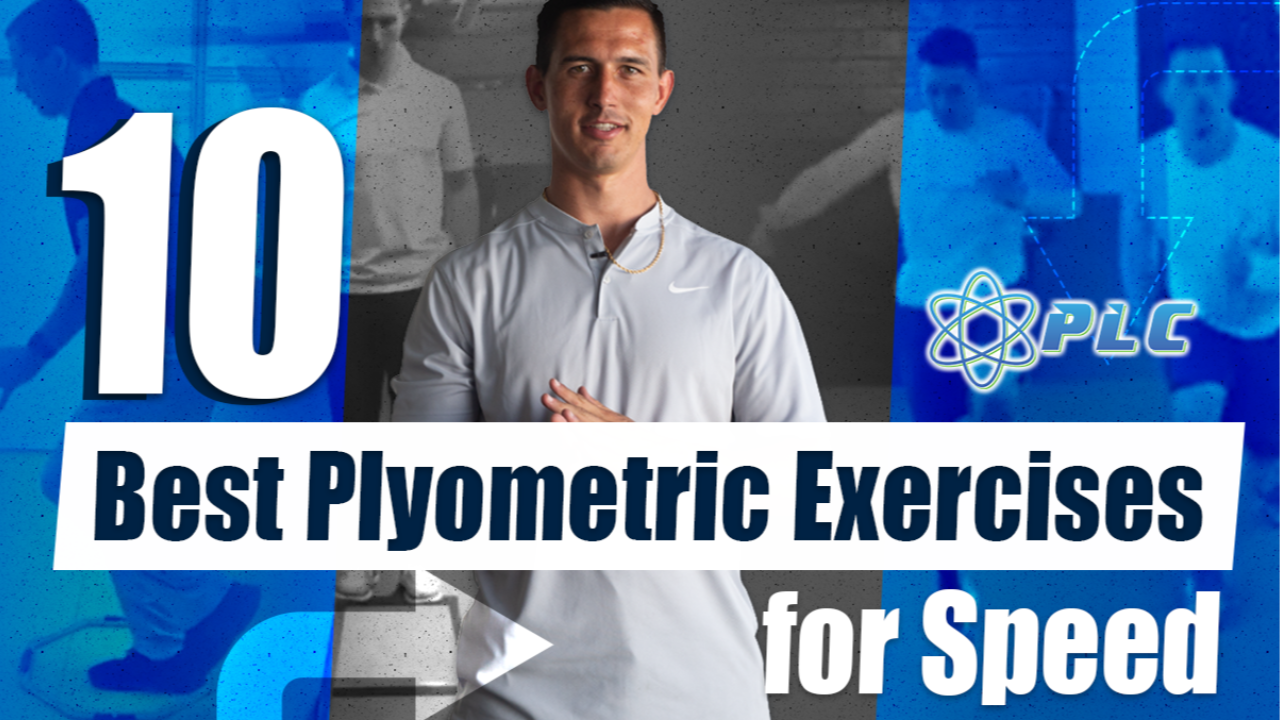
What are 10 plyometric exercises specifically designed for speed development?
Below are 10 plyometric exercises to specifically help speed by targeting power, balance, spine position and arm swing or a combination of all aspects in each exercise. When doing plyometric training to improve speed it is important to do exercises that involve working on a single leg.
This allows the athlete to make improvements with the right foot and left foot individually. Many times with sprinting there is an issue with timing with the left foot and right arm for example. So when doing single leg exercises it gives the athlete an opportunity to specifically target that issue and address it.
With that said here are 10 plyometric exercises to improve speed. Enjoy!
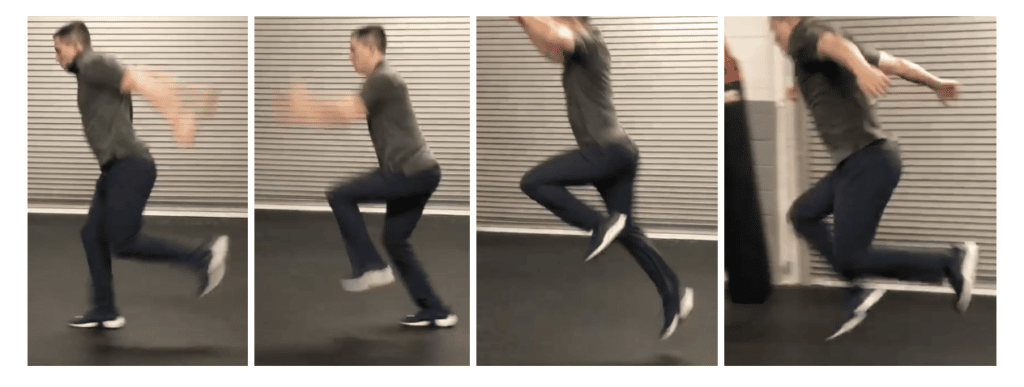
1. Single Leg Broad Jumps
When doing these you really want to make sure you’re landing with the toe facing forwards while landing on the balls of your feet. When landing, make sure the knee does not cave in much; try to keep ankle, knee and hip facing same direction.
Also, when you’re jumping you want to spend the least amount of time on the ground as possible. It should be a quick transition between jumps. In order to do this make sure to coordinate swinging arms forward while foot is landing on the ground.
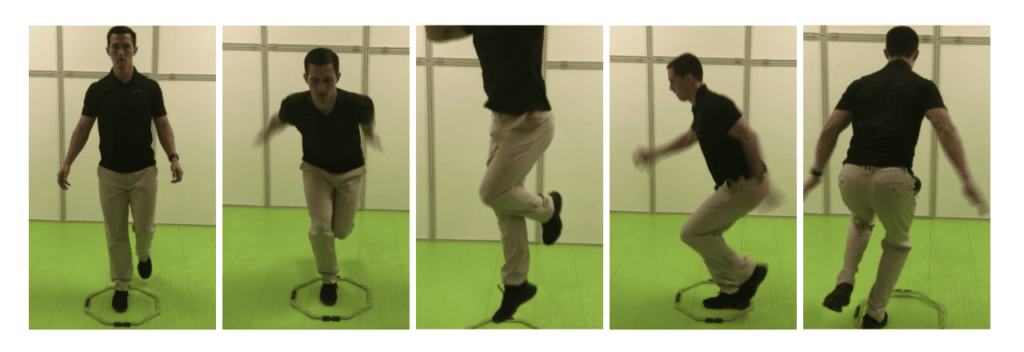
2. 90 degree Ankle Jumps
You’re going to start by jumping straight up in the air on one foot. When in the air, you are going to rotate 90 degrees. If you can, mark a box on the floor to ensure that you are jumping straight up and down and not to the side. This will also help you with balance and overall body control.
You want to make sure that you keep your knee and ankle stable when landing, so it is not moving inwards, and also that you are landing on the balls of your feet, not your heels. Lastly, when landing try to land with the knees slightly bent to limit overall foot contact time and develop more explosive power.
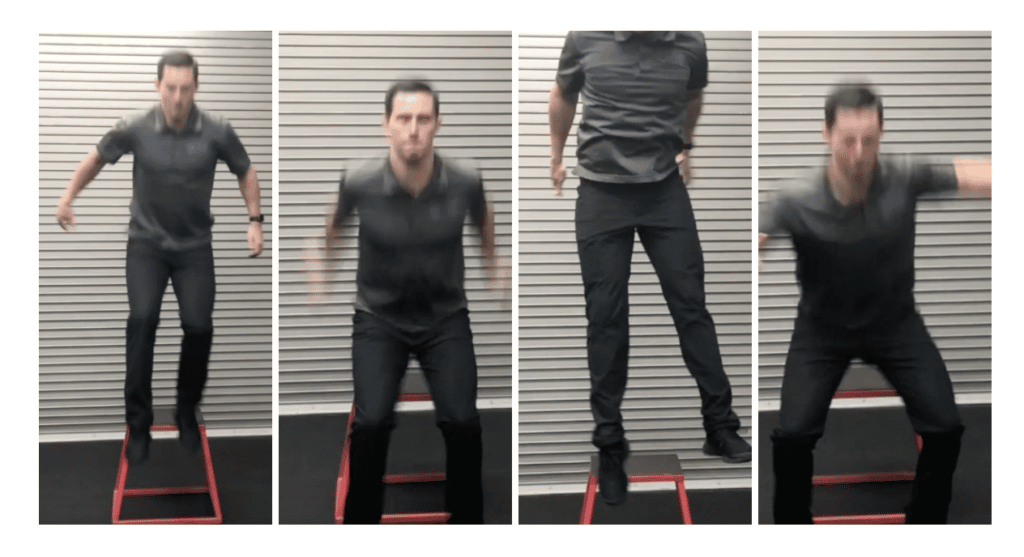
3. Max Depth Jump
For this one, you’re going to start on an elevated surface, in the picture above I am on a 16 inch box, but a chair or step would work as well. First, lift one leg and step off the box with both feet to land with both legs simultaneously.
Important not to jump off the box but instead almost fall off
From there, land in a squat position with feet shoulder width apart and jump straight up into the air. When landing the balls of the feet should hit the ground first and the arms should be loading backwards with the chest and head up.
Land softly so you can load and immediately jump as high as you can in the air before landing back in the original starting position. Common mistakes are to let the spine round, not properly coordinate the arms and or let the knees or ankles cave in when landing.
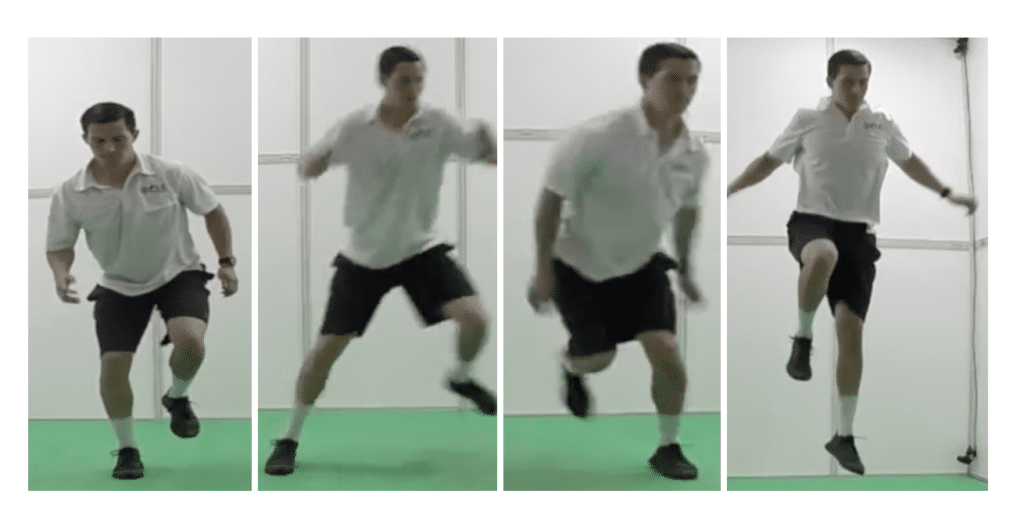
4. Single Leg Lateral Jump into Vertical Jump
Start with one foot on the ground, in the above exercise the right foot is down. Loading into the hip by bending the right knee and loading weight back, then jump upwards and sideways as far as possible. Land on the left foot and absorb the weight through the lower body before quickly exploding up as high as possible.
Land softly then load back into the starting position by bending the left knee and loading into the left foot. Then jump back as high and as far as possible to the right, land softly with the right leg to absorb the force and translate back up into a single leg vertical jump. Repeat for 8-10 reps.
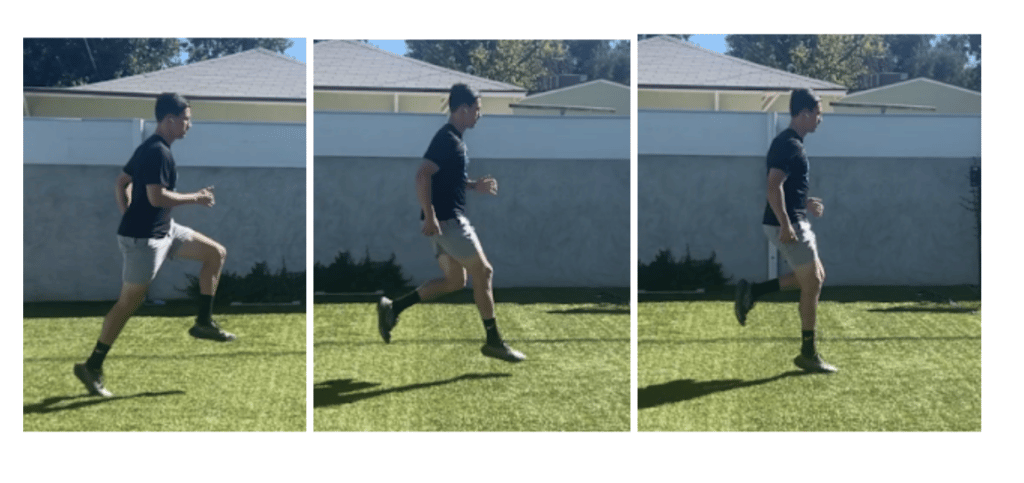
5. Bounds
This is one of the best plyometric exercises to build speed. This power training exercise is great to improve both form as well as enhance the body’s stretch shortening cycle. The key here is the drive the front knee up and coordinate with the opposite arm.
So when left knee is at max height the right hand should be behind the right hip. The biggest issues with sprinting come from knee height and arm extension which can easily be addressed in this exercise.
As with any plyometric exercise the landing is critical. Limited foot contact time, maintain jump feet forward, keep the spine up and land on the ball of the foot.

6. Power Skips
This is another really good exercise for speed as it focuses on the back leg extension. When the foot lands try to be as much on the ball of the foot but it is natural to be a little further back here. It is important to quickly get the heel up when landing and getting the foot to push straight up. When doing this correctly the athlete should be getting much more height vertically as opposed to horizontally.
While doing power skips the hands should be getting behind the hip and the momentum of the body drives the arms forward and upward. It is a common mistake for the athlete to allow the arms overhead which does not translate over well for sprinting. Additionally, it is common for the feet to cross over, keep the feet hip width apart when landing to properly train the body’s lower body power.
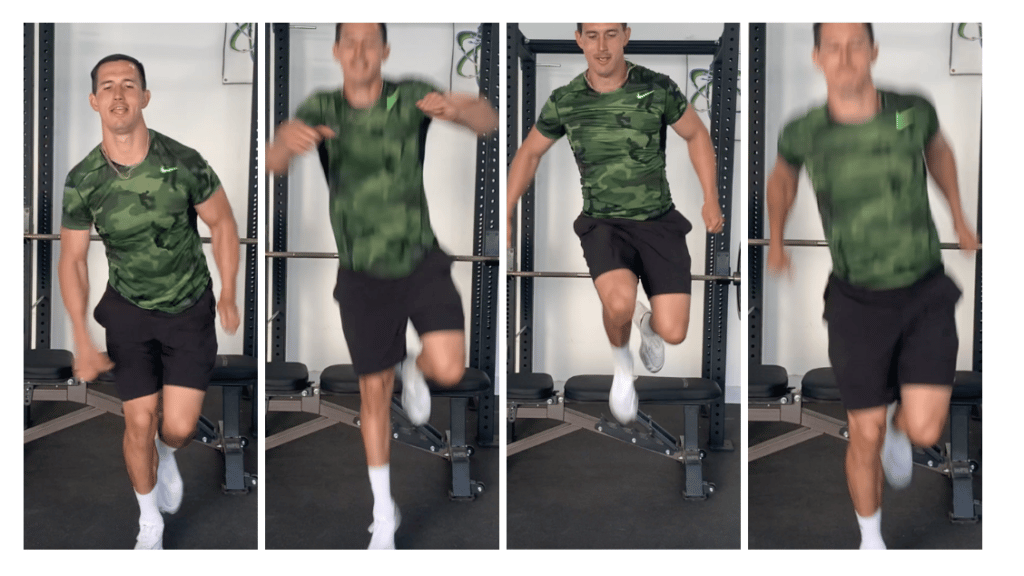
7. Single Leg Tuck Jumps
Warning: This is a very advanced exercise.
The single leg tuck jump can be a very beneficial exercise but it is also very advanced as it requires a lot of lower body control and awareness. This can be a very effective jump training exercise when done correctly but it is important to land with feet shoulder width apart and in alignment with the rest of the body.
The best you can land softly into a slight knee bend so you can quickly accelerate off the ground. It is similar to a squat jump except you are incorporating a knee drive with the exercise. So immediately after jumping drive the knee up as high as possible, then back down in order to land with foot underneath the hip.
The more common variation of this is a two leg tuck jump where you load into a squat position and jump straight up driving both knees to the chest. Both the single leg tuck jump as well as two legs are great to help athletes generate power in their lower body.
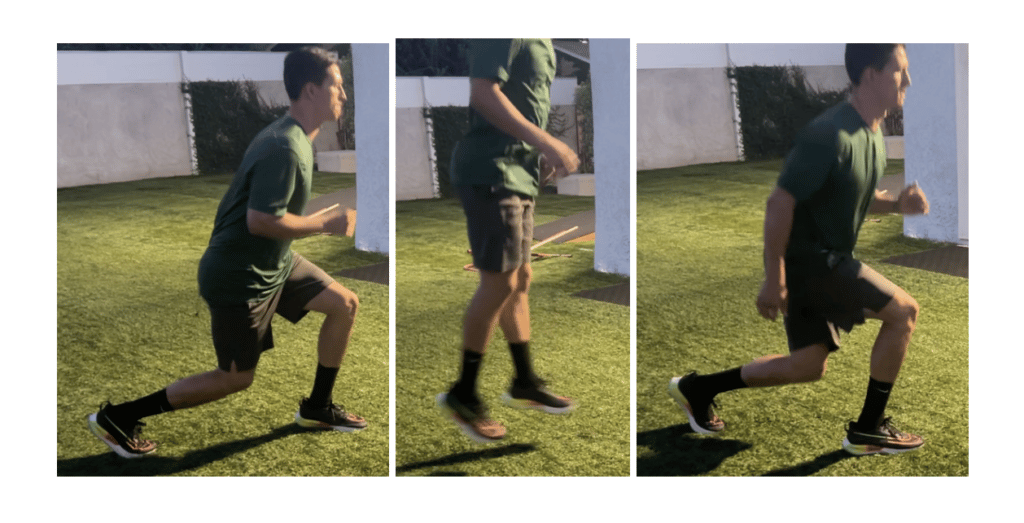
8. Alternate Jumps
This is one of my favorite exercises as it is very simple to do and there are many benefits in both lower body strength as well as power.
The starting position for this is in a lunge position with both knees bent and back heel facing straight up. From there, you want to jump straight in the air and switch the legs to then land back in the original lunge position.
So for example start with the left foot forward and right leg is back. It is important the heel of the right foot is straight up to increase range of motion in the toe. From there, jump into the air and switch legs so you are landing with the right leg forward and left foot behind.
This exercise targets all the major muscle groups needed to help running faster as well as jumping higher. One of my favorites and can be done in a variety of age groups.
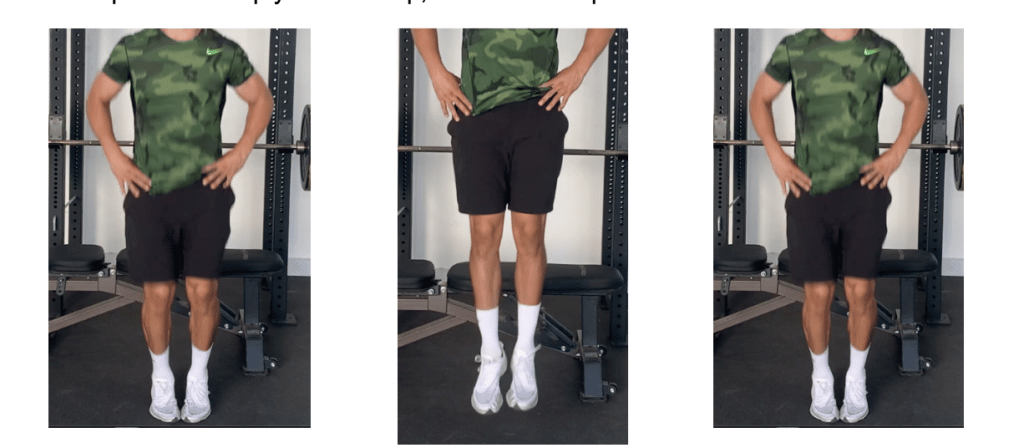
9. Ankle Jumps
The ankle jumps is one of the few plyo exercises that puts a big focus on the ankles/feet. It is similar to jumping rope accept there is more power recruited from the lower body. When doing the ankle jumps you actually want to limit knee bend and keep spine and head facing straight forward.
The idea would be to jump as high as possible just using the ankles, then lift the toes up as high as possible when in the air to make the exercises focused on getting power out of the lower leg quickly.
When doing ankle jumps you are building strength in the anterior tibialis muscle as well as muscle in the bottom of the foot. While this has great athletic performance benefits it is also a great exercise that helps with preventing shin splints and other ankle injuries.
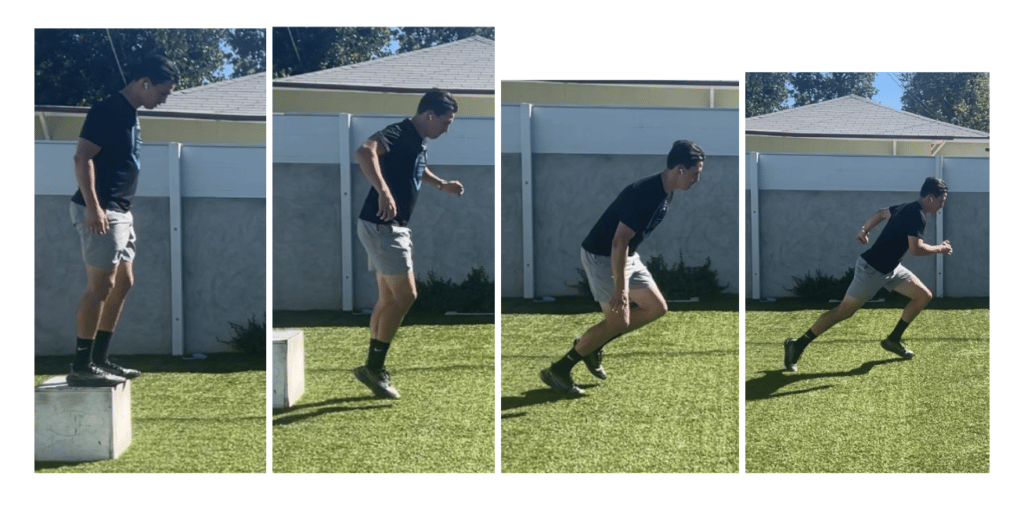
10. Depth Jumps into Sprints
Starting the same way as the max depth jump I previously talked about, step off your bench or box. This time instead of landing with feet hip width or right underneath the hips, the feet are going to land in more of a lunge position with one foot in front of the other.
When landing the athlete is focusing on maximizing the eccentric phase by utilizing the downward action of landing to then quickly accelerate forwards. This is a great exercise to improve acceleration and deceleration for field sport athletes.
What are the plyometric exercises?
Plyometric exercises or plyometric movements involve repetitive rapid stretching and contracting of muscles. The main goal of a plyometric training program would be to increase explosive power, jump height, athletic performance and much more.
A plyometric training program should not be done every day as it puts too much stress on the body and can increase risk overuse injuries in the entire body and a plateau in performance. Instead splitting up a program into upper body plyometric exercises on one day then focusing more on upper body strength/range of motion would have much better long term success.
What are plyometric exercises good for?
Plyometric exercises are best to be able to build overall power and explosiveness. What makes an exercise a plyometric exercises is focusing on limited amount of time on the ground. Whether you are performing a box jump or in a push up position. The part of the body that is being challenged will be coming off the ground.
Check out this video for the BEST Plyometric Exercises:
Do plyometric exercises build muscle?
Yes plyometric exercises absolutely build muscle, especially over the course of a few months or even a year. Another good idea is to match a plyometric exercise with a strength exercise. Typically a plyometric workout will incorporate some strength training exercises such as a squat with a plyometric exercise such as a squat jump.
Is it true that plyometrics is an isometric exercise technique?
No. A plyometric workout is something that focus on the muscles stretch shortening cycle or the ability of the muscle to contract quickly. Whereas a isometric exercise is an exercise where the athlete is holding for a long period of time. A good example would be a wall sit where the athlete is holding a squat position for a long period of time.
How is isometric different from plyometric?
The main difference between an isometric exercise and a plyometric exercise is the contraction of the muscle. When doing an isometric exercise the muscle contracts and holds that position for a period of time say 15 seconds. Alternatively, plyometric training is done to speed up the stretch shortening cycle of the muscles. Which means the muscle is rapids changing length as opposed to an isometric exercise where the muscle length stays the same.
What is an example of a plyometric exercise compared to an isometric exercise?
The most simple example of an isometric exercise is a plank. I am a big fan of different types of plank exercises to develop core strength but it is an exercise where the plank position is held which means the muscles of the core are maintaining a certain length.
SIDE NOTE: Make sure when doing A PLANK KEEP hips the same height as the shoulders.
Now there are many examples above of plyometric exercises that include pictures as well. The most common being any type of box jump or depth jump. The overall goal of plyometric training is developing power by rapidly contracting the muscles.
When doing box jumps the athlete is starting on the ground, loads into a squat position and jumps up onto a box. This can be done with both legs or often times I alternate single leg box jumps. Where the athlete jumps first off the right leg then left leg and progresses through 6-8 reps.
What are plyometric exercises for?
In general plyometric exercises are to improve athletic performance and explosive strength. This is by specifically training the concentric muscle contraction during an explosive box jump or plyometric push up. When doing plyometric training it is important to consider the amount of stress put on the body both when performing the exercise as well as when landing.
Make sure to be using proper form and a good rule of thumb is that when landing keep the feet shoulder width and knees slightly bent to absorb the force. There are definitely risks in plyometric training because of the amount of stress the lower body and upper body take on when landing especially when jump height and explosive strength begin to improve.
***So I can not stress enough the importance of proper form when landing or decelerating to help stay safe.***
Does plyometric training improve speed?
Absolutely, when looking at any exercise program that is trying to improve speed there undoubtedly plyometric exercises incorporated. There are a ton of correlations between vertical jump height and broad jump distance with overall speed.
Not only does plyometric training improve speed, I would say that it is an absolute necessity that every speed focused workout routine includes a plyometric element in order to get the most out of the program or for the athlete to be able to succeed.
Adding plyometric exercises into a workout routine with top speed development, first 3 or 5 steps or even drive phase training will certainly help the athlete achieve higher levels of speed much faster. That is why I made this blog post in the first place!
Is a Burpee a plyometric exercise?
Technically a burpee is a plyometric exercise but is not a great exercise to increase maximum power. When doing a burpee, the overall goal is to improve physical fitness rather than improve the concentric muscle contraction.
The reason I say that is because the exercise is very long. Typically plyometric workouts involve exercises that take a very small amount of time in order to complete. For instance, a broad jump where you load into a deep squat then jump forward as far as you can.
This movement happens very quickly and the focus is on generating maximum power to get as far as possible. Whereas, a burpee you start standing, then go into a deep squat, then get into a high plank or push up position, then depending on the personal trainer, actually perform a push up. Then bring the feet back forwards so the feet are a little more than shoulder width and jump straight up with the arms straight.
A lot of time, a lot of moving pieces and while it is good to improve physical fitness it does not have near the potential impact as some of the exercises pictured above.
Final Thoughts
I hope this article provided some information to help you understand how to implement plyometric training into your speed program or exercise program. If you are new to speed development I highly recommend you checking out some of our articles that go in detail into sprinting mechanics here:
Overall the goal was to give you some good plyometric workouts that will improve maximum power as well as overall speed. What is important when it comes to working out is considering how you are doing specific movements.
I constantly preach to coaches as well as to athletes that how you do one thing is how you do everything. So if there are breakdowns in your form or technique when doing plyometric exercises, then is almost certainly the same or similar issues found in your jump or sprinting mechanics.
Conclusion
If you have any questions or need any help during your sprint training journey do not hesitate to reach out either by filling out the form below or you can sign up for one of our programs.
For most people I recommend the sprint breakdown as it is an easy way to get some professional coaching, drills and exercises over a 4 week span. Unlimited breakdowns and coaching for 4 weeks for one low price. You can check out the page here.
Stay connected with news and updates!
Join our mailing list to receive the latest news and updates from our team.
Don't worry, your information will not be shared.
We hate SPAM. We will never sell your information, for any reason.

